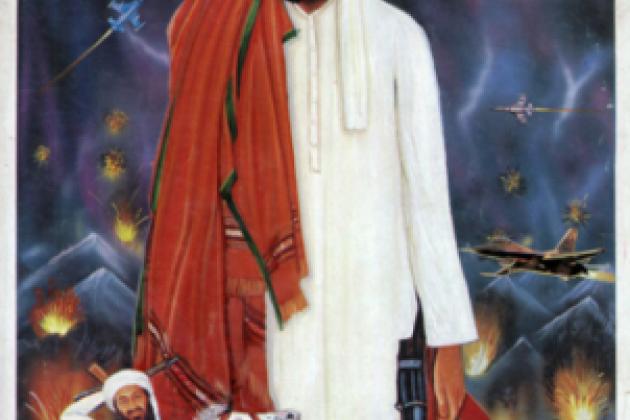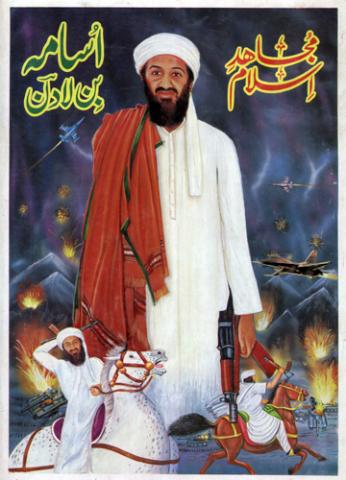
Before the Islamist version, we used to think about terror in strategic, that is, means-ends terms. Terror, defined as maiming and murdering civilians, was to serve a more or less rational purpose: killing a potentate for the sake of regime change, slaying colonials to achieve national independence. However evil the means, a solution was theoretically possible: write a new constitution or withdraw from overseas possessions. This is the model of anti-colonial warfare. Once independence was achieved, the Mau Mau in Kenya or the FLN in Algeria stopped the mayhem, especially for lack of targets, who had disappeared.
Jihadi terrorism (JT) does not fit the “strategic model” for three reasons. One, the purpose keeps changing. Two, the ends become unlimited; the demands are “resolutely uncompromising.”1 Three, the proclaimed ends are not the real ones. Whence it follows that, short of completely eliminating the threat by superior and sustained force, there is no “rational” solution to the problem. Concessions do not work in the face of changing, boundless, or make-believe ends.
Listen to
Jihadi Terrorism’s Moving Targets
Changing Goals: The best example is Osama bin Laden. In his 1996 fatwa, “Declaration of War against the Americans Occupying the Land of the Two Holy Places,” he called for the expulsion of Americans from Saudi Arabia. Then, the call was for the destruction of Israel, then for the elimination of all Western forces from all of Islam, beginning with Afghanistan. Nor did the “moveable feast” end here. Taking a page from the writings of Sayyid Qutb, his disciple turned on America as such in 2002, demanding that the country “reject the immoral acts of fornication, homosexuality, intoxicants, gambling, and usury.” If goals keep changing, JT cannot be satisfied by definition.
Unlimited Ends: The “rolling” nature of JT’s purposes is closely related to their boundless expansion, which leads to the hypothesis that it is the demanding, not the substance of the quest that truly matters. If the game has no end, as in a blackmailing situation, there is no offer that could satisfy, hence no closure. Not only is the existence of Israel the issue, but the Jews as such. “They will leave you nothing, either in this world or the next,” read a bin Laden message in 2005. Such an indictment targets the Jews’ boundless evil essence in the here and hereafter; hence they must be fought to the end, here and everywhere.
Three key concepts of JT are the “Umma,” the “Caliphate,” and “Al-Andalus.” The “Umma,” the “Islamic community,” implies terminating the Islamic nation-state in favor of the Caliphate that would rule all of Araby and Islam. “Al-Andalus” refers to the restoration of Islamic rule over lands once controlled in the Iberian Peninsula, all the way to those once occupied in France. As far as political ends go, these are about as boundless as can be. It is in their nature that they cannot be achieved, unless in a real-life Apocalypse that leaves Islam as the sole inheritor of (much of) the earth.
Apocalyptic ends, which by definition cannot be realized in the real world, sharpen the question: “What does JT want?” Ends that are beyond JT’s grasp rephrase the issue: “What does it really want?” What are the differences between the proclaimed and the actual purposes of JT? One answer is an old one, the “propaganda of the deed,” usually attributed to Mikhail Bakunin. It is not an idea (or the end) that breeds the action, but the deed that propagates the idea—again, not something that could be achieved through a rational political process.
In the JT framework, “martyrdom” for its own sake has come to play a dominant role—a concept largely divorced from concrete goals like driving the Israelis from Palestine. The true aim may be heaven, a better place than the here and now. Or serving as a model that will recruit others to the cause of suicide bombing. Or giving honor (and post-mortem material benefits) to one’s family. At any rate, the silence that usually follows such attacks speaks for itself; almost never are reasons given or grievances uttered. The deed is the message.
Or the deed has nothing to do with the “Jew” or the “Infidel”—and everything with the power struggle inside the JT universe. Indeed, the vast majority of victims are other Muslims, deemed either enemies or adhering to the wrong faith. Iraq is the best example. The endemic mayhem is between Shi’a and Sunni, no Western “Infidels” needed. Those who dwell on the “root causes” of JT—the Israeli occupation, the American presence—cannot explain the “fratricidal terrorism” that predominates in the realm of Islam. Samuel Huntington’s famous phrase “Islam has bloody borders” should actually read: “Islam’s bloodiest borders are on the inside.”
A final answer to “What terrorists really want” may be drawn from Max Abrahms’ eponymous article in International Security (Spring 2008). He argues that “organizational maintenance,” not political grievances, explains the persistence of terrorism. People join “not to achieve their official goals, but to experience social solidarity”—as in any voluntary association.2 Terrorism then becomes a way of life, nourished by communal warmth and sustained through crime, like extortion or drug-trafficking. Various studies3 have concluded that, say, members of Hezbollah and Palestinian jihadis, have joined up for social acceptance and as antidote to alienation. If so, goal-achievement not only doesn’t matter, but actually militates against system maintenance. When the March of Dimes ran out of polio victims, the organization turned to muscular dystrophy. The organizational imperative goes some way toward explaining why JT does not present reasons for its attacks, why demands keep changing or expanding, and why concessions are neither requested nor accepted.
JT, we might conclude on a more general note, is about being, not achieving. What it wants matters little; its true purposes are often not even grasped by its own adherents. We might succeed in analyzing what “they really want,” but the normal ways of politics—give and take—will elude us. JT and the West is not a strategic relationship.
—Josef Joffe















